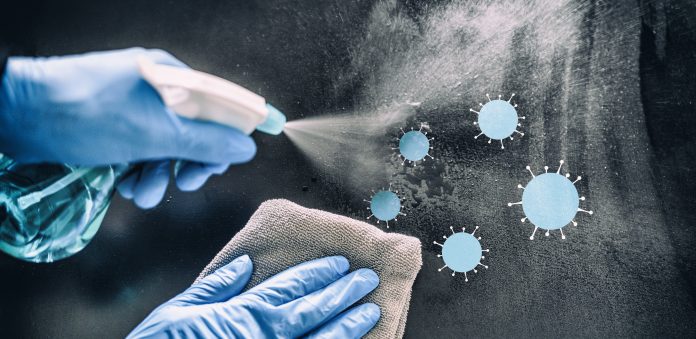Dr Deborah Lee from Dr Fox Online Pharmacy, reveals the truth about super-spreaders as part of our focus on COVID-19
President Biden’s inauguration was an exemplary event, efficiently staged with careful social distancing, and masks were worn by all who attended. I admired the forethought, telling the public to stay away and to represent them instead, with 200,000 American flags. What an awe-inspiring, responsible, and kind act, on behalf of the new president and his team, who have vowed to make the control of the COVID-19 pandemic their number-one task. A stark contrast to the shambles of the super-spreader Rose Garden event last summer at the White House where no restrictions were in place, and 34 attendees, became infected.
The term ‘super-spreader’ has become a catchword in the current COVID pandemic. But what does it mean?
- What is a super-spreader?
- Who are the super-spreaders?
- What makes an event, a super-spreader event?
- How can we prevent super-spreading?
What is a super-spreader?
Here’s a definition. One person infected with COVID-19 will usually infect around three other people (ECDC May 2020). A super-spreader is someone who infects more than this number of people. Super-spreaders are highly infectious. Most super-spreaders are unaware they are infected and pass the virus on unknowingly.
What is a super-spreader event?
A super-spreader event is an occasion, where a gathering of people leads to an outbreak of infections, which may have arisen from just one infected attendee.
Super-spreader events are serious as they result in clusters of cases within the community. Here are a few examples –
- In South Korea, one 35-year-old Chinese woman, unknowingly infected with COVID-19, attended two church services, on 9th and 16th February 2020. Her attendance led to 5,000 people becoming infected with the virus. She developed symptoms in between the two church visits, including a high fever, and was eventually persuaded to take a test, but by the time she had the results, it was too late.
- When Santa visited a Care Home in Belgium last December, he tested positive to the virus three days later and had inadvertently infected 127 people, 27 of whom have now died.
- In September 2020, an American woman arrived at the town of Garmisch-Partenkirchen in Bavaria. She had recently tested positive to the virus but ignored the quarantine rules. She went out drinking in pubs and bars and infected 22 people. As a result, the resort had to close for two weeks. She now faces prosecution, a possible €2,000 fine, and a possible prison sentence of up to 10 years.
- In February 2020, the pharmaceutical company Biogen held a conference in Boston at which 99 people became infected. By October 2020, the virus had spread further through their contacts, to infect around 300,00 people in 29 different states and countries.
Characteristics of a super-spreader
Why is that some people spread large quantities of virus, whereas other spread very little or not at all? Are there specific characteristics of a super-spreader?
-
Super-spreaders may have a higher viral load
The viral load is the number of viral particles in each millilitre of blood (WHO). The viral load is more likely to be high if the recipient became infected by inhaling respiratory droplets from another super-spreader – which also contained a high viral load. This high viral load means large numbers of virus organisms are actively replicating at the same time, increasing viral shedding, and increasing infectivity.
High viral loads are usually associated with more severe disease. They also often result in a stronger immune response compared to someone infected with a low or moderate number of viral organisms.
Those infected with a high viral load are more likely to be admitted to hospital. Although this takes them out of the community setting and stops them from spreading the virus locally, they are at a higher risk of infecting other patients, and hospital staff. In the UK (May 2020), around 3% of NHS staff tested positive to COVID-19, yet most of them were unaware they were infected.
-
Super-spreaders infect large numbers of people
In any pandemic, 20% of the population spread 80% of the infections. This is true for the COVID-19 pandemic.
In a study from Hong Kong (September 2020), using contact tracing data from 1,038 COVID-19 patients, 19% of cases had seeded 80% of infections. The authors identified between four and seven super-spreader events, resulting in 51 clusters of cases. These super-spreader events took place in family gatherings, bars, live music settings, weddings, and other social events, and at a temple. In 42% of clusters, infections had been acquired overseas.
The authors did not find that reducing the time between symptom onset and confirming a positive diagnosis, reduced the rate of transmission. This is probably because the infection is most infectious before symptoms develop.
Many people remain unaware they are most infectious early in the infection before symptoms ever develop. Throat swabs taken from the time of initial transmission show that viral loads are highest in the two to three days before symptoms occur. It’s also human nature to be in denial and think it won’t happen to you. 44% of new cases arise due to asymptomatic spread.
- The dispersion effect – the K number and the R number
- The R number – this is the number of people to whom any one person who is infected is likely to transmit the virus.
- The K number – this number represents the difference between how many people one infected person can infect, bearing in mind, some people don’t infect anybody, and others infect large numbers of people.
This is called the dispersion effect. If K is at infinity, everyone is passing the virus to the same number of people, meaning the R number and the K number are the same.
Where there is great variability in the number of people who are infected, the K number gets closer to 0. COVID-19 is thought to have a K number of 0.19.
Having a low K value might be a good thing if only we could identify in advance, who was a super-spreader. At present, we can’t do this, but we do know that super-spreaders spread the virus in places where people are crowded together, where there is poor ventilation, and where people are breathing heavily, singing, or shouting. This underlies the current advice to stay at home.
-
New viral strains increase the risk of transmission
In December 2020, a new variant of the COVID-19 virus – known as variant 202012/01 – was identified. Worryingly, this new strain is on the increase.
Scientists at Imperial College, London examined 275,000 COVID tests taken late in 2020. From this data, they calculated that as after the November lockdown in England, although numbers of cases of the original COVID-19 virus declined, there was an increase in the numbers of cases of the new variant. They calculated that variant 202012/01 was 50% more transmissible than other variants.
Very recently, evidence has become available suggesting this new strain may have higher mortality. If super-spreaders, super-spread the new variant, this will be highly detrimental to controlling the pandemic.
-
The environment and viral transmission
In a 2020 Brazilian study from São Paulo, the authors investigated the environmental and social factors associated with the spread of COVID-19. Higher rates of COVID infection were demonstrated in association with areas of increased population density.
Lower rates of COVID infection were associated with:
- Social isolation.
- Increasing air temperature.
- Increasing wind speed.
- Higher amounts of U/V light.
These findings confirm the advice to stay at home – avoid crowds and crowded areas. They also show that COVID-19 infection is likely to be easier to control in the warmer summer months, than in the winter.
-
Genetic factors
Much research has been undertaken, examining the details of viral transmission. The COVID-19 virus is passed in droplets of respiratory mucous and saliva emanating from the mouth and nose.
Saliva and mucous vary in consistency – they can be watery and thin, or thick and viscous. On coughing or sneezing, thin, watery secretions are likely to travel further. Genetic differences affecting the quality and quantity of saliva and mucous may help or hinder the transmission of infection. Sneezing with a blocked nose can increase the distance of mucous spray, by 60%.
Individual genetic variations may make viral infection or transmission more likely by other means. For example, differences in the ACE-2 gene alter the ability of the COVID-19 virus to attach to the receptor and invade the cell. The presence of the TMPRSS2 gene, a gene associated with prostate cancer, has been linked to more severe COVID disease. The presence of human leukocyte antigens (HLA) A, B, and C has been noted in those with more severe COVID infection.
-
Super-spreaders and mask-wearing
A 2020 Swiss study calculated that the cough of a super-spreader fills a room quickly with an incredible 7.4 million copies of the coronavirus for every cubic meter of air. Breathing heavily, shouting, or singing will increase the viral load further.
Wearing a mask reduces the chance of becoming infected with COVID-19 – to only 3%. This was the finding of a large meta-analysis published in The Lancet (June 2020) which reviewed 172 observational and 44 comparative studies on the use of face masks in preventing the spread of infection. To quote the authors of the Swiss study, “it boggles the mind why people are so resistant to wearing a mask.”
Yet 35% of the UK population are still not wearing masks. Failing to wear a mask has been linked to anti-social personality traits such as callousness, deceitfulness, hostility, manipulativeness and risk-taking, and a diagnosis of Antisocial Personality Disorder (ASPD).
Final thoughts
The super-spreader, on one hand, is an innocent perpetrator as for the most part, they are unaware they are infected and are transmitting infection. However, now we know super-spreaders exist, ignorance is not an excuse.
Who are the super-spreaders? The characteristics of the super-spreader are set out in Box 1. Any one of us could be a super-spreader, a very hard fact to bear on our conscience. Control of the pandemic depends largely on not allowing ourselves to become super-spreaders, as well as protecting ourselves from the invisible super-spreaders, already at large in the community.
Box 1- Characteristics of a super-spreader
| Characteristics of a COVID-19 super-spreader |
| Extra high viral load |
| Highly efficient at spreading the virus |
| Practice social/behavioural interactions facilitating spread at different locations |
| Aided by new viral strains with increased infectivity |
| Increased viral spread due to more favourable environmental conditions |
| Genetic variations may favour their ability to transmit the virus |
| May be unwilling to comply with restrictions or wear face masks |
For more information











